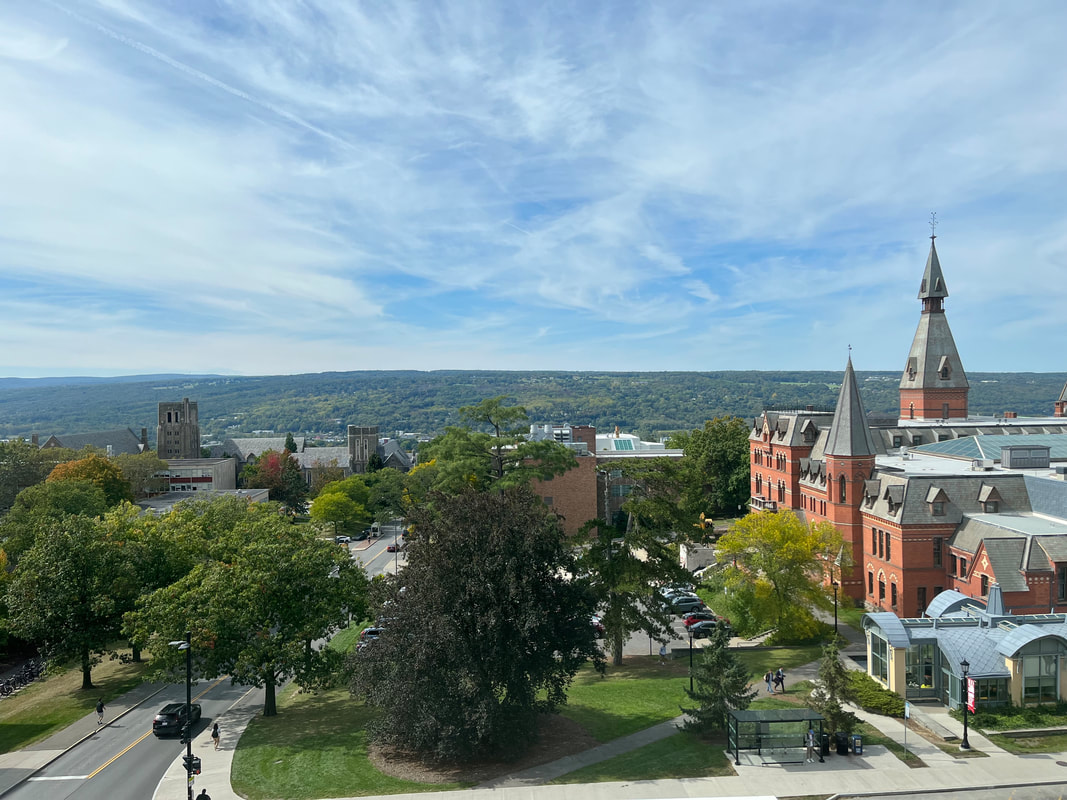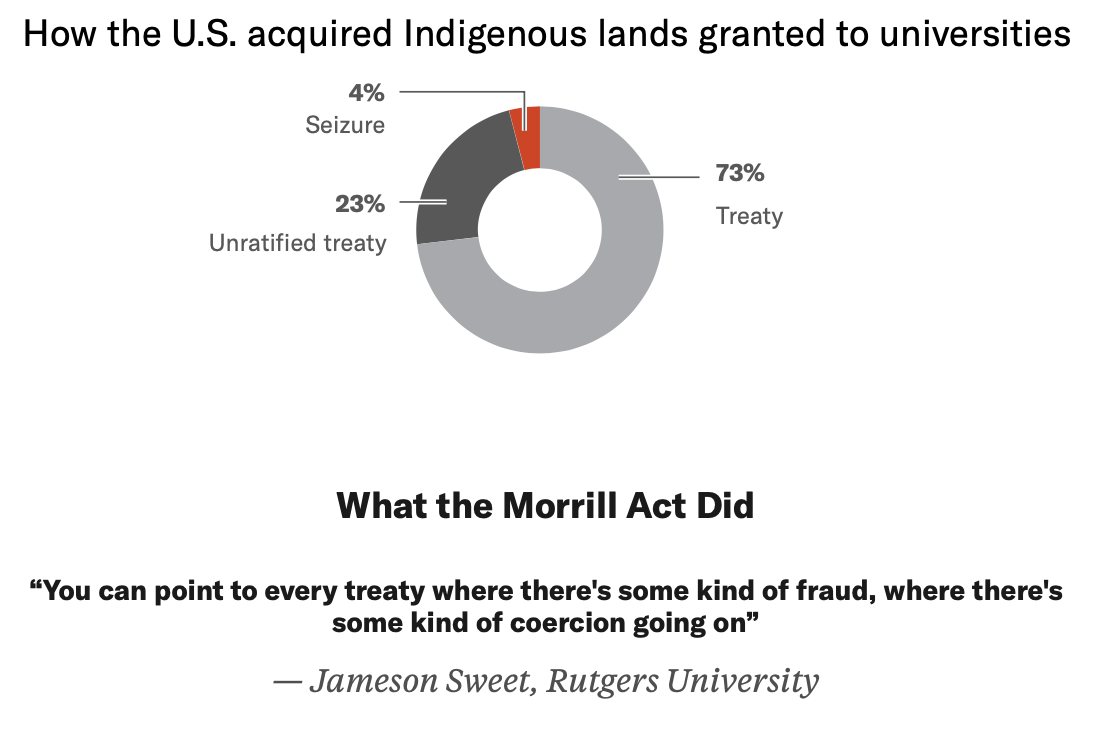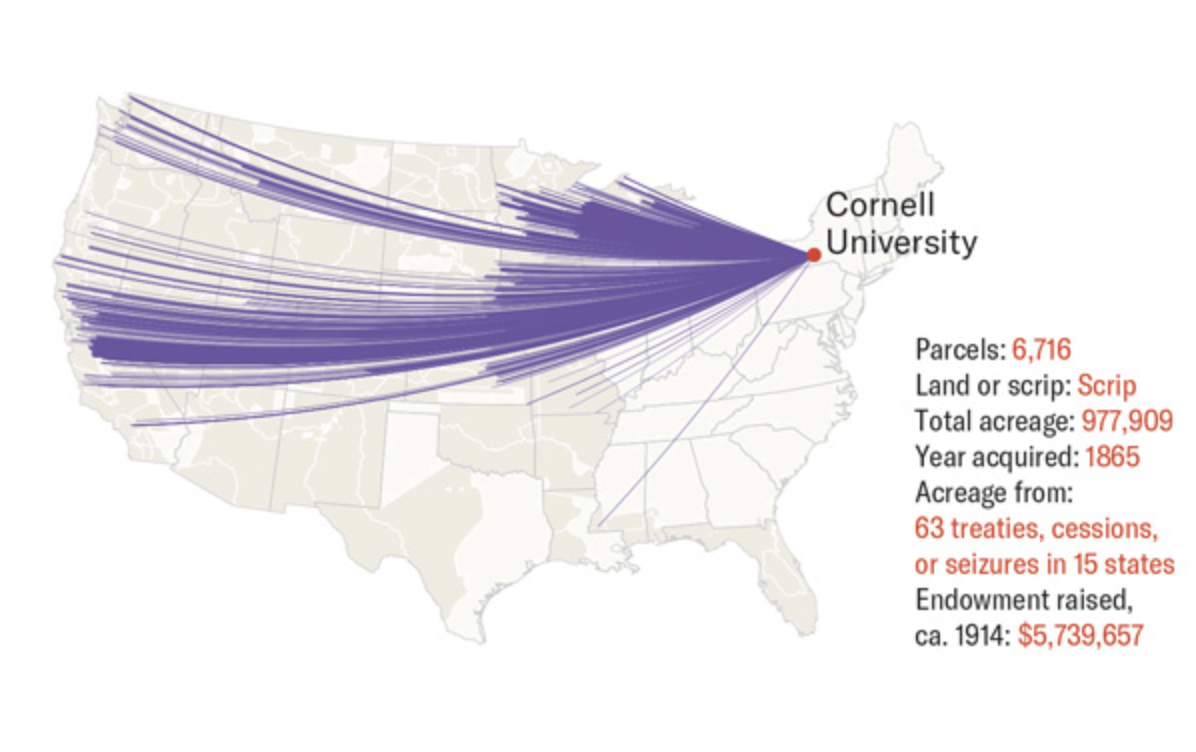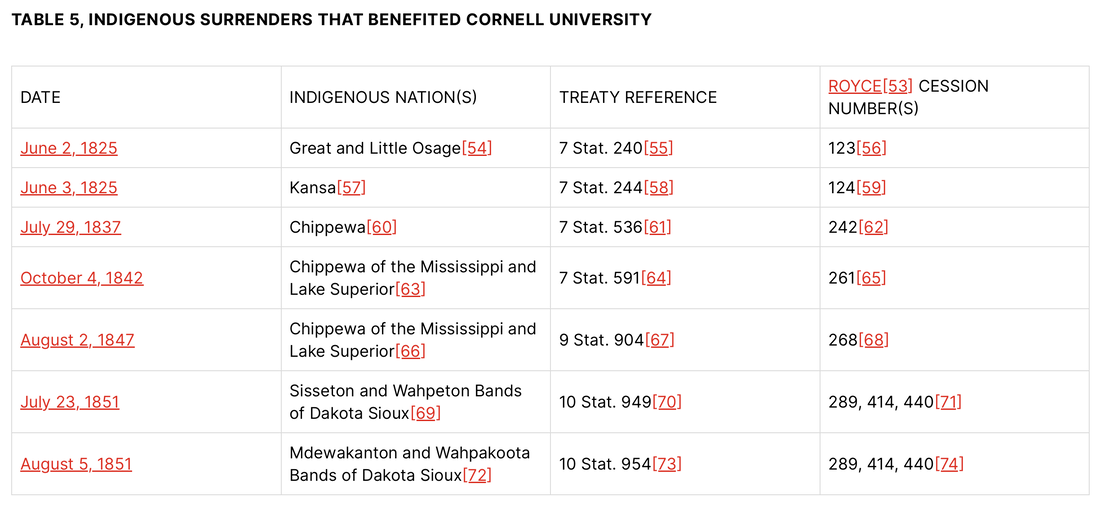Land-Grab Universities
|
As a researcher at a land-grant university (Cornell) and long before, I had heard the term "land-grab university", which I at first assumed was a reference to the stolen lands these universities are built on. The term goes much further than this, however; this page is a collection of resources on the meaning and history of the term, as well as current commentary and efforts to untangle this history.
|
|
According to the Association for Public and Land-Grant Universities (APLU), land-grant universities are institutions designated to receive the benefits of the Morrill Acts of 1862, 1890, and 1994. These institutions were originally intended to "teach agriculture, military tactics, and the mechanic arts as well as classical studies so members of the working classes could obtain a liberal, practical education." In addition, the Smith-Lever Act of 1914 established a partnership between USDA and land-grant universities, through a Cooperative Extension Service, to provide education and research services to local farmers and address rural agricultural issues. This goal, while it may seem initially noble, was funded through the sale of lands stolen from Indigenous communities across the western United States.
Chances are you have heard land acknowledgements recited at many of these universities, formal statements that recognize the Indigenous peoples who formerly possessed the lands those colleges now stand on. What many of these statements miss is that land-grant universities were built not just on Indigenous land, but with Indigenous land. A 2020 investigation by High Country News thoroughly investigated the sources of land-grab university wealth through the Morrill Acts, eventually uncovering 99% of these sources. You can use this tool that they developed to explore sources of wealth for any land-grant university in the country. Learn more about the Land-Grab University project here.
It's important to acknowledge this history as an institution, which Cornell has done. However, as always, acknowledgement must be followed by action -- Cornell also in 2020 launched a Cornell University and Indigenous Dispossession (CU&ID) Committee, aimed at addressing these issues in more detail.
According to their webpage, the CU&ID committee's ongoing project is to "determine (to the best of our ability) those Indigenous communities who have been affected by Cornell’s past and present landholding activities." To date, this list "approaches 250 Nations and communities, including groups that have been displaced into Canada and those groups within the U.S. who do not have federal recognition. We are in the process of making diplomatic outreach to these communities to inform them about their historical ties to Cornell and consult with them about possible remedies." Also useful is the timeline at the bottom of CU&ID updates webpage. In particular, one recent step completed in 2023 should be highlighted: On June 23 [2023], the [Cornell University and Indigenous Dispossession] committee finished the process of diplomatic outreach to impacted Indigenous Nations and communities. A total of 251 Nations and communities were contacted. I am excited to see where this continues to go! You can sign up for updates here.
Finally, four key posts from the CU&ID webpage are well worth exploration:
 A photograph of Cornell University Campus (Sage Building on the right) A photograph of Cornell University Campus (Sage Building on the right)
|


